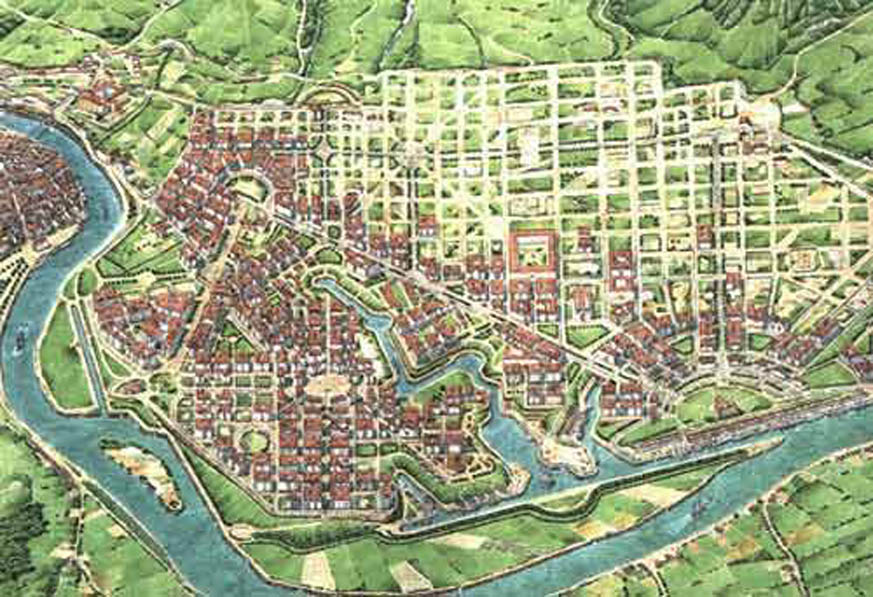
Despite being involved in many wars during this period – French invasion under Napoleon in 1818, and two Carlist Wars on four different fronts (1835-36 and 1873-76) – economic development was overwhelming.
Bilbao, which up until then had consisted of Old Bilbao and the Old Town, needed both to grow physically and to reflect its economic expansion politically. Thus began, in 1870, an annexation process, first takin Abando, then Begoña, and later Deusto and Luchana (1924). As you can see, the city which we know today is a comparatively recent invention. Its rapid progress is reflected in the city’s architecture; many of its monuments were erected during this same period: Plaza Nueva, Arriaga Thetre, the Town Hall…

During the first part of the 20th Century Vizcaya reached a great economic peak which saw its culmination in the happy 1920s, based pricipally upon the sale of iron to England, some of which was destined, among other things, for the manufacture of arms for the First World War.
After this phase, and the changes wrought by The Civil War, the Villa saw its industry at its greatest peak, attracting thousands of immigrants from different parts of The State, who had to be provided with shelter in specially created local districts. Owning to the short space of time in which these districts were built, and the surrounding mountainous gegraphy, it was difficult for Bilbao to follow lineal urban expansion.

Demographically speaking, we must consider the fact that Great Bilbao, or the area of influence of the Nervión Estuary, where that great industrial development took place, boasts a million inhabitants; not so the Villa de Bilbao, which has around four hundred thousand.

At the moment the whole of this zone, which relied upon its industry as its main source of income, is undergoing a period of economic recession. Even so, its inhabitants look toward the future with optimism, and thus face the difficult challenge of transforming the industrial society which took root in the 19th Century into a city of high-quality service industries.




